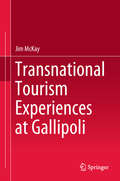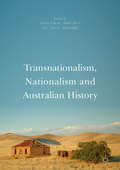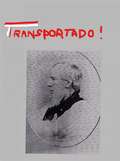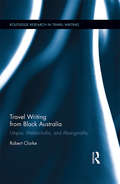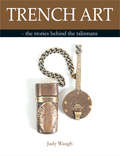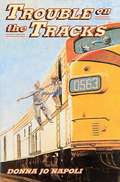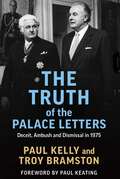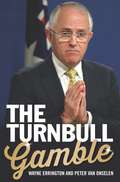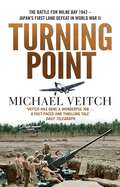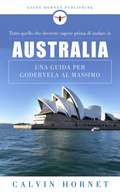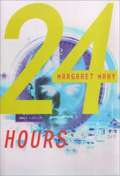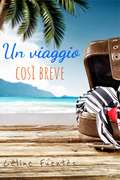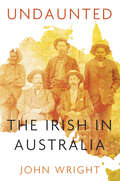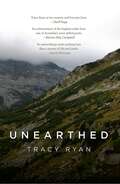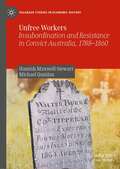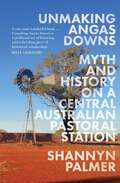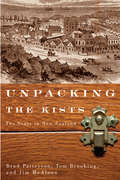- Table View
- List View
Transnational Tourism Experiences at Gallipoli
by Jim McKayThis book offers a fresh account of the Anzac myth and the bittersweet emotional experience of Gallipoli tourists. Challenging the straightforward view of the Anzac obsession as a kind of nationalistic military Halloween, it shows how transnational developments in tourism and commemoration have created the conditions for a complex, dissonant emotional experience of sadness, humility, anger, pride and empathy among Anzac tourists. Drawing on the in-depth testimonies of travellers from Australia and New Zealand, McKay shines a new and more complex light on the history and cultural politics of the Anzac myth. As well as making a ground breaking, empirically-based intervention into the culture wars, this book offers new insights into the global memory boom and transnational developments in backpacker tourism, sports tourism and “dark” or “dissonant” tourism.
Transnationalism, Nationalism and Australian History
by Alecia Simmonds Anna Clark Anne ReesUsing Australian history as a case study, this collection explores the ways national identities still resonate in historical scholarship and reexamines key moments in Australian history through a transnational lens, raising important questions about the unique context of Australia's national narrative. The book examines the tension between national and transnational perspectives, attempting to internationalize the often parochial nation-based narratives that characterize national history. Moving from the local and personal to the global, encompassing comparative and international research and drawing on the experiences of researchers working across nations and communities, this collection brings together diverging national and transnational approaches and asks several critical research questions: What is transnational history? How do new transnational readings of the past challenge conventional national narratives and approaches? What are implications of transnational and international approaches on Australian history? What possibilities do they bring to the discipline? What are their limitations? And finally, how do we understand the nation in this transnational moment?
Transportado
by Combo Translations Terry Rachelle Spring'TRANSPORTADO - A HISTÓRIA DO PIONEIRO' Com base na vida real de George Smith, a história conta como ele se voltou para o crime, teve sua sentença de morte comutada à vida nas colônias e surgiu de começos humildes para se tornar um proprietário de terras australiano pioneiro e rico. Chegando na colônia como uma juventude ingênua, ele aprende a lidar com gado e prosperar no campo severo e solitário, lidar com os nativos aborígenes em seu primeiro contato com pessoas brancas. Concedido a sua liberdade de ajuda na captura de um assassino assassino, ele começa a sonhar a terra impensável. Quando um fogo varre o campo, ele salva a cabeça tribal local e é concedido em troca, a mão da filha do chefe. Por acaso, George encontra uma maneira de ganhar dinheiro e a oportunidade de realizar seus sonhos e suas próprias terras. Sua esposa nativa morre pouco depois de entregar seu quinto filho e George viaja por terra para Sydney procurando uma governanta. Atraído por uma mulher irlandesa, ele propõe e aceita, retornando com ele para o distrito externo. Gradualmente, as crianças a aceitam como sua mãe e a família agora rica, começam a reivindicar a respeitabilidade.
Transportado
by Combo Translations Terry Rachelle Spring'TRANSPORTADO - A HISTÓRIA DO PIONEIRO' Com base na vida real de George Smith, a história conta como ele se voltou para o crime, teve sua sentença de morte comutada à vida nas colônias e surgiu de começos humildes para se tornar um proprietário de terras australiano pioneiro e rico. Chegando na colônia como uma juventude ingênua, ele aprende a lidar com gado e prosperar no campo severo e solitário, lidar com os nativos aborígenes em seu primeiro contato com pessoas brancas. Concedido a sua liberdade de ajuda na captura de um assassino assassino, ele começa a sonhar a terra impensável. Quando um fogo varre o campo, ele salva a cabeça tribal local e é concedido em troca, a mão da filha do chefe. Por acaso, George encontra uma maneira de ganhar dinheiro e a oportunidade de realizar seus sonhos e suas próprias terras. Sua esposa nativa morre pouco depois de entregar seu quinto filho e George viaja por terra para Sydney procurando uma governanta. Atraído por uma mulher irlandesa, ele propõe e aceita, retornando com ele para o distrito externo. Gradualmente, as crianças a aceitam como sua mãe e a família agora rica, começam a reivindicar a respeitabilidade.
Travel Writing from Black Australia: Utopia, Melancholia, and Aboriginality (Routledge Research in Travel Writing)
by Robert ClarkeOver the past thirty years the Australian travel experience has been 'Aboriginalized'. Aboriginality has been appropriated to furnish the Australian nation with a unique and identifiable tourist brand. This is deeply ironic given the realities of life for many Aboriginal people in Australian society. On the one hand, Aboriginality in the form of artworks, literature, performances, landscapes, sport, and famous individuals is celebrated for the way it blends exoticism, mysticism, multiculturalism, nationalism, and reconciliation. On the other hand, in the media, cinema, and travel writing, Aboriginality in the form of the lived experiences of Aboriginal people has been exploited in the service of moral panic, patronized in the name of white benevolence, or simply ignored. For many travel writers, this irony - the clash between different regimes of valuing Aboriginality - is one of the great challenges to travelling in Australia. Travel Writing from Black Australia examines the ambivalence of contemporary travelers' engagements with Aboriginality. Concentrating on a period marked by the rise of discourses on Aboriginality championing indigenous empowerment, self-determination, and reconciliation, the author analyses how travel to Black Australia has become, for many travelers, a means of discovering 'new'--and potentially transformative--styles of interracial engagement.
Treasure Hunters: The Plunder Down Under (Treasure Hunters #7)
by James Patterson Chris GrabensteinWith their parents in trouble once again, the Kidds must traverse the Australian Outback, recover a pair of stolen gems, and defeat treasure-hunting pirates to save them!The Kidd family is on their way to Australia to find Lasseter's Gold when they are challenged by fellow treasure hunter Charlotte Badger, who challenges them to a race to the gold! But when the Kidds pull into port in Australia, their parents are suddenly arrested -- they've been framed! It turns out Charlotte Badger is a pirate, and she's planted a priceless stolen black opal on the Kidds' ship, The Lost!Now Bick, Beck, Storm, and Tommy have seven days to traverse the Australian Outback, find Charlotte Badger and her pirate cronies, and bring back the evidence that will prove their parents innocent. If they fail, their parents will be found guilty and thrown in prison . . . forever!
Trench Art: the stories behind the talismans
by Judy WaughThis unique collection of trench art evokes emotion. Each piece was created in turmoil but all are beautiful - intuitive works of art about music, faith, love and honour. 56 pieces are from WWI. All are signed with name and service number. Most are small and tactile, often worn as a fob. Many are made from coins and brass from the battlefield; some are carved in bone and wood. Most belonged to young soldiers who were killed in action or died of their wounds - at Gallipoli, France and Flanders, Palestine and Mesopotamia. Twelve belonged to Anzacs. This book tells their stories - of men from England, Scotland, Wales, Australia and New Zealand, bound by adventure and loyalty to their common ancestry. . . . . . The engraved ID holds the key to the story. The heart of each story is different. There are stories of courage under fire and desertions at Colombo; of death from sunstroke and survival through three theatres of war; of medals awarded and fines for misadventures; of men from the Outback in Queensland and young lads from Boys Homes in Kent. There are insights into social history - the ostracism and disgrace of venereal disease, the generational poverty in industrial cities, the imperative to secure oil lines in Iraq. And there are heartbroken letters from those left behind. . . . . . This book will appeal to collectors of artefacts, coins and militaria. It will also appeal to those interested in family history, social history, military history and art therapy in trauma. So much can be found from so little. The range of artefacts may also interest researchers. There are over 64 artefacts in all, including two from the Boer War, one from Crimea, and seven from the convict era - all bearing testament to the primal need to carve a name.
Trouble on the Tracks
by Donna Jo NapoliWhile traveling across the Australian outback on a train, thirteen-year-old Zach and his younger sister, Eve, uncover an endangered bird-smuggling ring and try to save two trains from a full-speed collision.
Truth of the Palace Letters: Deceit, Ambush and Dismissal in 1975
by Paul Kelly Troy BramstonIn July 2020 the National Archives of Australia released the long-suppressed correspondence between Sir John Kerr and Queen Elizabeth II, written during Kerr's tumultuous tenure as Governor-General of Australia. The letters cover the constitutional crisis that culminated in Kerr's infamous dismissal of Labor Prime Minister Gough Whitlam in 1975. In The Truth of the Palace Letters Paul Kelly and Troy Bramston reveal their meaning and significance for understanding the dismissal. The analysis of these documents and their authors throws a revealing light on the connection between the Queen in Buckingham Palace and the Governor-General in Canberra. Coupled with newly discovered archival documents and interviews, Kelly and Bramston explain the implications of the letters for our Constitution, our democracy and the republic debate.
Turnbull Gamble
by Wayne Errington Peter van OnselenThe Liberal Party took a risk replacing Tony Abbott with Malcolm Turnbull. They had seen how voters could turn when the ALP tore down a first-term prime minister. But MPs were desperate, having witnessed the collapse in polling during Abbott's prime ministership. By the time Turnbull called the election it was still unclear what he wanted to achieve. He seemed strangely underprepared for a job that he had fought so long to win. Turnbull leads a party whose culture he doesn't share. While the narrow election victory may have justified the gamble to place him in office, does Turnbull have the leadership qualities needed to break the cycle of division and instability of the last decade?
Turning Point: The Battle for Milne Bay 1942 - Japan's first land defeat in World War II
by Michael VeitchSeptember 1942 marked the high-point of Axis conquest in World War II. In the Pacific, Japan's soldiers had seemed unstoppable. However, the tide was about to turn.On Sunday, 6 September 1942, Japanese land forces suffered their first conclusive defeat at the hands of the Allies. At Milne Bay in Papua New Guinea, a predominantly Australian force - including 75 Squadron (fresh from their action in 44 Days) - fought for two weeks to successfully defend a vital airstrip against a determined Japanese invasion. The victorious Australian army units were crucially supported by two locally-based squadrons of RAAF Kittyhawks.The Battle for Milne Bay and victory for the Allies was a significant turning point in the Pacific War, but while it received worldwide publicity at the time, it has since been largely forgotten... It deserves to be remembered. Michael Veitch, actor, presenter and critically acclaimed author, brings to life the incredible exploits and tragic sacrifices of these Australian heroes in another fast-paced and thrilling tale.
Tutto quello che dovreste sapere prima di andare in Australia: Una guida per godervela al massimo
by Calvin HornetQuesta guida riporta tutte le informazioni essenziali per pianificare e realizzare un viaggio in Australia, perché una volta fatto il programma sarà l’isola a fare il resto. Lanciamoci quindi in una nazione di superlativi, in un ipnotico confondersi di evasione e avventura. Qualcuno dice che l’Australia è un luogo dove si va per trovare sé stessi. Noi preferiamo pensarla come un luogo dove ci si perde, tra i territori e le esperienze migliori del pianeta.
Twenty-Four Hours
by Margaret MahyDuring his first twenty-four hours after finishing high school, seventeen-year-old Ellis unexpectedly becomes part of an inner-city world far different from his comfortable life, which helps him deal with his best friend's recent suicide.
Two Expeditions into the Interior of Southern Australia
by Charles SturtTwo expeditions into the interior of Southern Australia during the years 1828-1831, with observations on the soil, climate and resources of New South Wales.
Un viaggio così breve: Romanzo di evasione sulla Nuova Caledonia
by Céline FuentèsQuando la felicità è quasi arrivata, quando la strada è già scritta, e se fosse il momento di cambiare tutto? « La felicità non è più così lontana, Elisa può quasi toccarla con mano. È sicuro, il suo futuro sarà fatto di matrimonio e bomboniere e andrà tutto bene. Eppure, durante questa giornata perfetta di tranquillità, mercoledì tredici febbraio 2013, verso le quattordici e quarantacinque, mentre è ancora in ufficio, il telefono di Elisa inizia a vibrare. “Numero sconosciuto” ». Elisa, la trentenne, non immagina che una telefonata possa sconvolgere una vita. Accettando le incredibili opportunità che si offrono a lei, Elisa si lancia in un viaggio sbalorditivo che la porterà alla scoperta del Pacifico del Sud, in Nuova Caledonia. Romanzo finalista del premio Femme Actuelle 2017 con il titolo Le destin n'attend pas les gens tristes (Il destino non aspetta le persone tristi)
Un viaje tan pequeño: Novela de escape en la Nueva Caledonia
by Céline FuentesCuando la felicidad casi ha llegado, cuando el camino está trazado, y fuera la hora de cambiarlo todo… «La felicidad no está tan lejos. Elisa la toca con un dedo. Sin duda, su futuro se resolverá con la boda y el confeti y todo saldrá bien. Sin embargo, en medio de ese perfecto día de tranquilidad, ese miércoles trece de febrero de 2013, hacia las catorce horas cuarenta y cinco, cuando todavía está en la oficina, su móvil empieza a vibrar. Número desconocido». Elisa, en la treintena, no sabe que una llamada telefónica puede cambiar una vida. Al aceptar las increíbles oportunidades que le ofrecen, Elisa se embarca en un sorprendente viaje que la llevará a descubrir el Pacífico Sur, en la Nueva Caledonia
Una famiglia in guerra
by Gordon Smith Chiara BabeliDESCRIZIONE DEL LIBRO: “Una famiglia in guerra” è ambientato agli inizi del ‘900 durante il periodo della prima guerra mondiale. La storia segue le vicissitudini di sei componenti di una famiglia australiana mentre scelgono, per diverse ragioni personali, di andare a combattere. Il libro racconta i loro alti e bassi, i sacrifici e le vittorie: passando in rassegna ciò che queste persone si lasciano alle spalle, famiglie e bambini inclusi, e le difficoltà che affrontano lungo i loro percorsi, risulta stimolante e straziante allo stesso tempo. La storia include i loro spostamenti nel mezzo della guerra in Europa, esplora alcune delle complesse caratteristiche del territorio e riassume le vite dei tre ragazzi che tornarono a casa. Evidenzia anche l’angoscia della madre il cui figlio venne dichiarato disperso durante la battaglia di Fromelles e il cui corpo, cento anni dopo, non è ancora stato identificato. Sei membri della famiglia andarono in guerra. Solo tre ritornarono!
Undaunted: Stories About the Irish in Australia
by John WrightUndaunted is a collection of true stories about Irish men and women who travelled to Australia in search of a better life and battled against the odds in a remote and harsh world. From 1788 when the first convict ships landed to the mid-20th century, these true stories about settlers, convicts and their descendants highlight the best and worst of human behaviour in the kinds of dilemma that faced newcomers. This book tells the story of the Irish contribution to this struggle.
Unearthed
by Tracy RyanThis collection of elegies for dead friends and a past love is also a tribute to poet Tracy Ryan's embattled but joyous life on a plot of land in the bush. In a long sequence addressed to her Swiss–German first husband, Ryan delves into the feelings found with unresolved grief and lost love and the ambivalent emotions that remain after severing intense relationships. The universal themes from one of Australia's most gifted scribes is a must read for anyone with an interest in poetry.
Unfree Workers: Insubordination and Resistance in Convict Australia, 1788-1860 (Palgrave Studies in Economic History)
by Michael Quinlan Hamish Maxwell-StewartThis book examines how convicts played a key role in the development of capitalism in Australia and how their active resistance shaped both workplace relations and institutions. It highlights the contribution of convicts to worker mobilization and political descent, forcing a rethink of Australia’s foundational story. It is a book that will appeal to an international audience, as well as the many hundreds of thousands of Australians who can trace descent from convicts. It will enable the latter to make sense of the experience of their ancestors, equipping them with the necessary tools to understand convict and court records. It will also provide a valuable undergraduate and postgraduate teaching tool and reference for those studying unfree labour and worker history, social history, colonization and global migration in a digital age.
Unmaking Angas Downs: Myth and History on a Central Australian Pastoral Station
by Shannyn PalmerSome stories dominate how we see and interpret a place, while others are obscured from view. Angas Downs is a pastoral station in Central Australia, but pastoralism is only a fraction of what has happened there. Like all places it has accrued people and stories, in multiple layers, over time. Listening to Tjuki Tjukanku Pumpjack and Sandra Armstrong, two Anangu with deep and abiding connections to Angas Downs, a very different kind of place emerges from that conjured in myths and histories of pioneers and pastoralists that have shaped understandings of the past in Australia, particularly in the Northern Territory. Unmaking Angas Downs traces a history of colonisation in Central Australia by tracking the rise and demise of a rural enterprise across half a century, as well as the complex and creative practices that transformed a cattle station into Country. It grapples with the question of how people experience profound dislocation and come to make a place for themselves in the wake of rupture. Angas Downs emerges as a place of dynamic interaction and social life - not only lived in, but also made by Anangu.
Unpacking the Kists
by Brad Patterson Tom Brooking Jim McaloonHistorians have suggested that Scottish influences are more pervasive in New Zealand than in any other country outside Scotland, yet curiously New Zealand's Scots migrants have previously attracted only limited attention. A thorough and interdisciplinary work, Unpacking the Kists is the first in-depth study of New Zealand's Scots migrants and their impact on an evolving settler society. The authors establish the dimensions of Scottish migration to New Zealand, the principal source areas, the migrants' demographic characteristics, and where they settled in the new land. Drawing from extended case-studies, they examine how migrants adapted to their new environment and the extent of longevity in diverse areas including the economy, religion, politics, education, and folkways. They also look at the private worlds of family, neighbourhood, community, customs of everyday life and leisure pursuits, and expressions of both high and low forms of transplanted culture. Adding to international scholarship on migrations and cultural adaptations, Unpacking the Kists demonstrates the historic contributions Scots made to New Zealand culture by retaining their ethnic connections and at the same time interacting with other ethnic groups.
Unpacking the Kists: The Scots in New Zealand (McGill-Queen's Studies in Ethnic History)
by Brad Patterson Tom Brooking Jim McAloonHistorians have suggested that Scottish influences are more pervasive in New Zealand than in any other country outside Scotland, yet curiously New Zealand's Scots migrants have previously attracted only limited attention. A thorough and interdisciplinary work, Unpacking the Kists is the first in-depth study of New Zealand's Scots migrants and their impact on an evolving settler society. The authors establish the dimensions of Scottish migration to New Zealand, the principal source areas, the migrants' demographic characteristics, and where they settled in the new land. Drawing from extended case-studies, they examine how migrants adapted to their new environment and the extent of longevity in diverse areas including the economy, religion, politics, education, and folkways. They also look at the private worlds of family, neighbourhood, community, customs of everyday life and leisure pursuits, and expressions of both high and low forms of transplanted culture. Adding to international scholarship on migrations and cultural adaptations, Unpacking the Kists demonstrates the historic contributions Scots made to New Zealand culture by retaining their ethnic connections and at the same time interacting with other ethnic groups.
